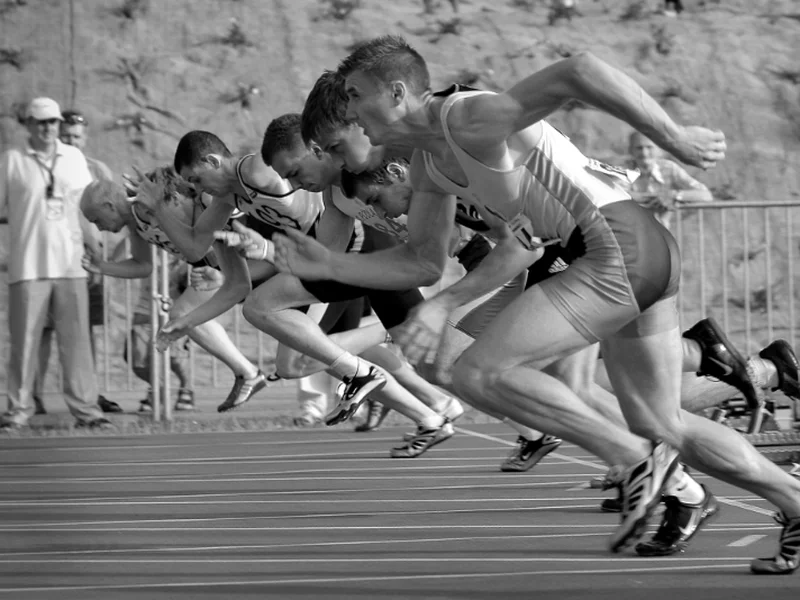Running has long been a popular form of exercise, but recent trends indicate a significant surge in popularity, positioning it as one of the fastest-growing sports globally. This growth is evident across various facets of the sport, from trail running to marathon participation.
The Rise of Trail Running
Trail running, which combines running with hiking on natural terrains, has seen remarkable growth. In Australia, for instance, the sport has gained immense popularity, especially among younger generations seeking stress relief and mental health benefits. Events like Ultra-Trail Australia have expanded significantly since their inception, becoming major attractions for both local and international participants.
Trail running offers a unique appeal by combining the cardiovascular intensity of running with the timeless pleasure of backcountry hiking. Both activities are known to boost endorphins, creating that coveted "runner's high." Beyond merely adding exercise value to a hiking experience, trail running allows backcountry enthusiasts to cover greater distances in less time.
This efficiency enables nimble-footed explorers to immerse themselves in more diverse landscapes during a single outing. Previously remote destinations become reachable within daylight hours, expanding the horizon of possibilities for outdoor enthusiasts seeking to maximize their wilderness experience.
Take the Pemigewasset Wilderness in my home state of New Hampshire, for example. The “Pemi loop” is a trail that circles a range of mountain ridges and extends for 30 miles. Hiking this trail typically takes me 3 days and requires overnight gear. But running the Pemi Loop gets the job done in a day.
Marathon Participation Boom
Marathon running has also experienced a notable boom. In 2024, major marathons, such as those in Paris, Berlin, and New York, reported record-breaking participation. The surge reflects a growing interest in long-distance running among diverse groups. Factors contributing to this trend include the social and inclusive nature of running, with platforms like Strava and local run clubs fostering community engagement.
The COVID-19 pandemic also played a role by influencing people's exercise habits, prompting many to seek outdoor activities as a safer alternative to indoor gyms and fitness centers. With lockdowns, social distancing measures, and concerns about virus transmission in enclosed spaces, individuals turned to activities such as running, cycling, hiking, and walking. Parks, trails, and other outdoor spaces saw a surge in visitors as people sought both physical exercise and mental relief from the stresses of the pandemic. This shift not only encouraged a greater appreciation for outdoor recreation but also led to lasting changes in fitness routines, with many continuing to prioritize outdoor exercise even after restrictions eased.
Technological Advancements and Community Engagement
The integration of technology has also played a pivotal role in the sport's growth. Platforms like Strava have created virtual communities where runners can share their progress, set goals, and participate in challenges, fostering a sense of camaraderie and motivation. In 2023, Strava's community grew to over 120 million athletes, with users logging record numbers of activities, indicating a robust and engaged running community.
The proliferation of smartwatches and fitness trackers has transformed workouts into engaging experiences. By recording users' exercise data and tracking progress over time, these devices allow individuals to visualize their achievements and interact with their fitness information as an extension of our increasingly digital lifestyle. Fitness apps “gamify" exercise, presenting users with beautifully designed goals and achievement levels. These digital companions offer timely encouragement and motivation, functioning as personalized coaches available at all times.
Personally, for me, running is and always will be about the run itself. But I must admit, I get a certain thrill from seeing a Personal Record or Local Legend distinction pop up in my activity summary.
While these technologies have influenced numerous sports, their impact on running has been particularly profound. The cornerstone of smartwatch functionality—convenient and relatively accurate heart rate monitoring throughout workouts and daily activities—provides access to one of the most valuable biomarkers of health. This continuous heart rate data proves especially beneficial for cardiovascular exercise, where real-time performance metrics directly correlate with fitness improvements and health outcomes.
Conclusion
The surge in running's popularity can be attributed to its accessibility, its mental and physical health benefits, and the strong sense of community it fosters. Whether through trail running, marathons, or local parkruns, individuals worldwide are embracing running not just as a sport but as a lifestyle. As these trends continue, running is poised to maintain its trajectory as one of the fastest-growing sports globally.
Ready to join the running movement? Whether you're hitting the trails, training for a marathon, or aiming for some light exercise, running is more than a sport—it's a lifestyle!
Seasoned runner? What got you into the sport? Let me know in the comments below. #RunYourWay"

Comments